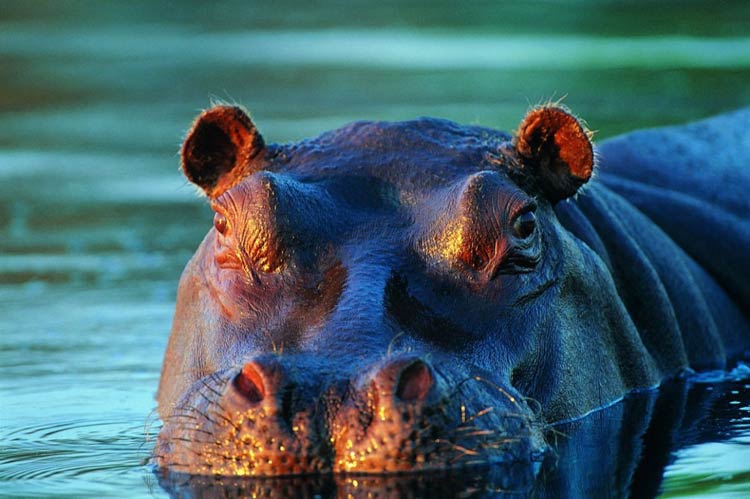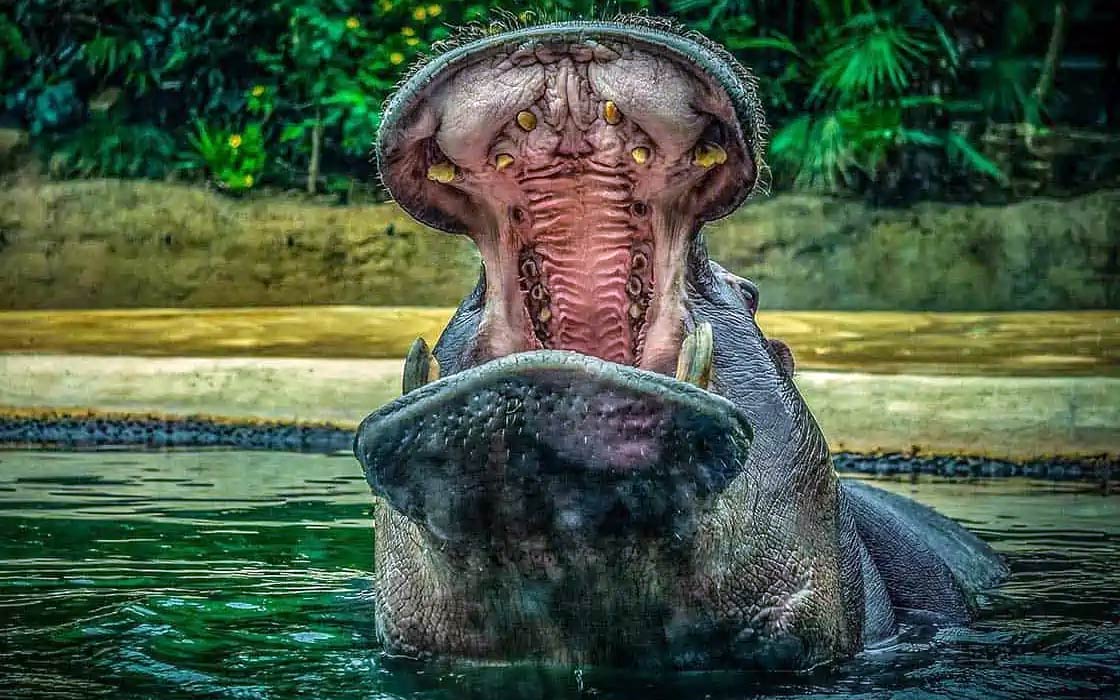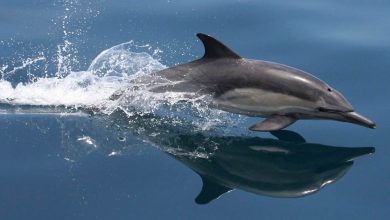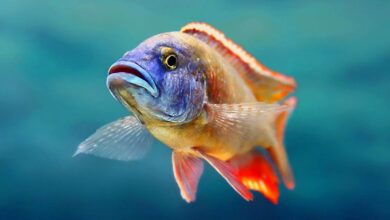Do hippos drown and can’t swim?
Hippo That Can’t Swim
Hippopotamuses (Hippopotamus amphibius) commonly known as hippos are animals that spend most of their lives in water. It would seem, therefore, that they should be excellent swimmers, like seals or otters. However, the truth is quite different: hippos cannot swim at all. In fact, they don’t even try! Instead, they… go to the bottom. Literally.
Why doesn’t a hippopotamus swim?
If we were to throw a hippo into a very deep pool (which, to be clear, would be cruel and foolish), we wouldn’t see any joyful splashing or elegant waving of paws. The hippo would sink to the bottom like a stone. This is because its body is too heavy to float on the water’s surface.
Hippos’ bones are exceptionally dense, a condition known as pachyostosis. This is a characteristic of many semi-aquatic animals, which helps them stay underwater. Hippos also don’t have large amounts of fat that would help them stay afloat, like whales or seals. Their bodies are optimized for life in water, but on completely different principles than those of marine animals.
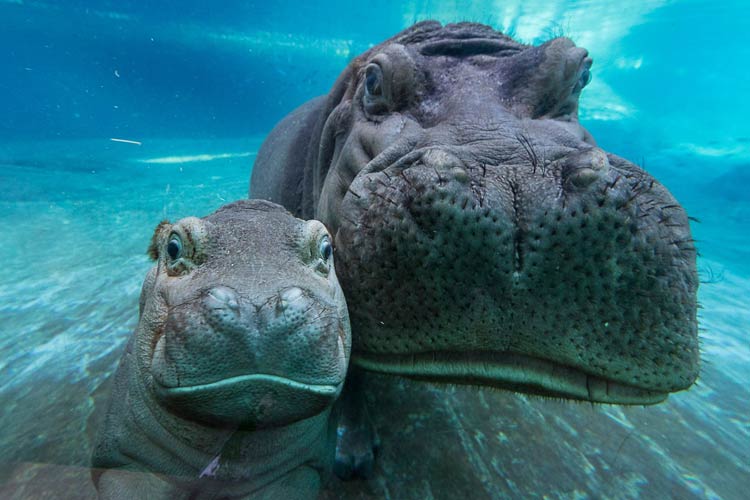
How Does a Hippo Move Underwater?
Hippos don’t swim, but rather “walk” along the bottom of rivers and lakes. They push off the ground and move forward like astronauts on the Moon – in slow motion, but with great grace. Their short, massive legs work perfectly for this strategy, and their streamlined body shape helps minimize water resistance.
This unusual way of moving is not a problem for them – quite the opposite! Thanks to this, they can remain submerged for extended periods, avoiding heat and threats. Interestingly, even during sleep, hippos automatically surface to take a breath, and then sink back down. This happens without their conscious participation – their body does it on its own.
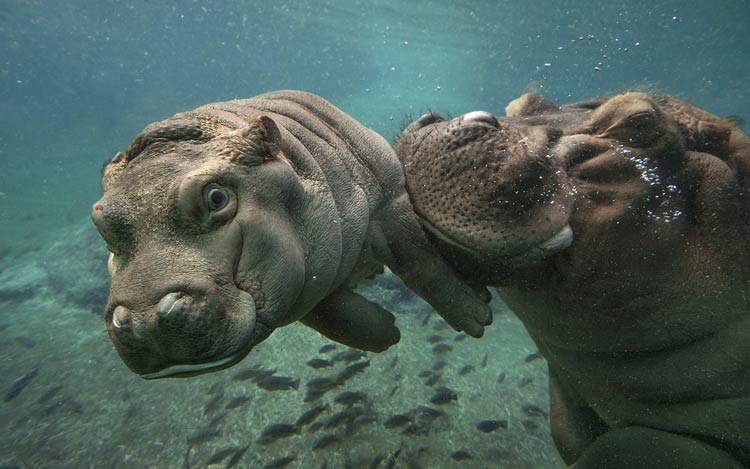
Can a Hippo Drown?
Although hippos are perfectly comfortable in water, they can drown if they fall into a body of water that is too deep. Young hippos, who have not yet mastered the technique of walking underwater, can have trouble in deeper parts of the river, especially if the current is strong. In such situations, they are often helped by their mothers, who carry them on their backs.
It Would Seem That Hippos Have a Thick Layer of Fat, at Least They Look That Way?
Hippos give the impression of being fat and obese, but in reality, their bodies are structured differently than one might think. They have thick skin (up to 6 cm) and massive muscles, but relatively little fat compared to, for example, elephant seals or walruses.
Their “plump” appearance is mainly due to their massive muscles and loose skin, which forms folds, giving them a barrel-shaped appearance. It is this dense structure that makes hippos heavier than water, and instead of floating on the surface – they sink to the bottom.
Unlike marine mammals, hippos do not need a layer of fat for thermal insulation, as their environment is warm year-round. Instead, they cool down by immersing themselves in water and secreting a characteristic “blood sweat” – a reddish mucus that acts as a natural sunscreen and antiseptic.
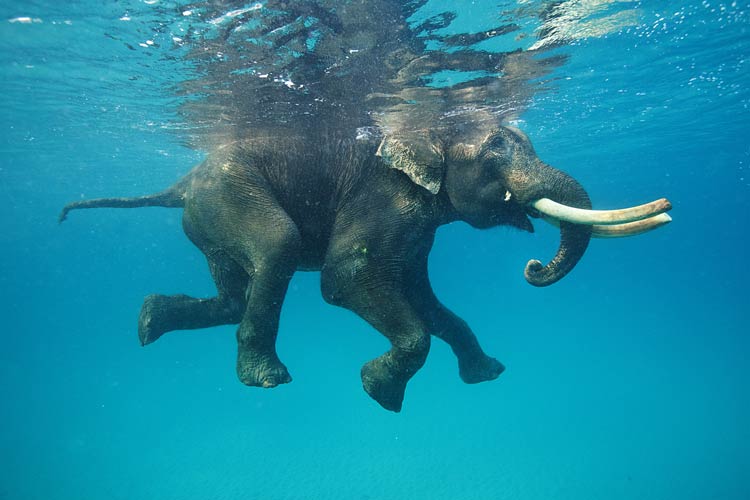
Why Can an Elephant Swim and Float on Water, Unlike a Hippo?
An elephant, despite being heavier than a hippo, can swim and float on water due to several key anatomical and physical features:
Lower Body Density
An elephant’s body (Loxodonta africana – African elephant, Elephas maximus – Asian elephant) has a lower density than a hippo’s body because its bones are not as massive and dense. Hippos have a condition called pachyostosis – excessive bone density. Elephants do not have this adaptation, so their overall density is closer to that of water, which makes it easier to float on the surface.
Larger Amount of Body Fat
Elephants, although not as “fat” as seals or whales, have more fat than hippos. Although their fat layer is not substantial, it still increases buoyancy, which helps them stay afloat.
Lungs as Natural “Life Jackets”
Elephants have huge lungs that act like floats. When they fill them with air, their bodies become “lighter” in the water and it is easier for them to stay afloat. Interestingly, they can regulate their buoyancy by controlling the amount of air in their lungs.
Active Swimming Technique
An elephant not only floats on water, but also actively swims. It uses its powerful legs to paddle alternately, much like a dog in water. It can also use its trunk as a natural breathing tube, allowing it to swim for long periods, even over long distances. Elephants are able to cover considerable distances in water – they can swim several kilometers without rest.
Summary: Why Does an Elephant Swim and a Hippo Sink?
- An elephant has less dense bones than a hippo.
- An elephant has more fat, which increases its buoyancy.
- An elephant actively swims, while a hippo only pushes off the bottom.
- An elephant uses its lungs to control buoyancy, while a hippo is naturally adapted to staying underwater.
Although both animals are huge and spend time in water, their strategies are completely different. Elephants are efficient swimmers, and hippos are masters of “walking” on the bottom.
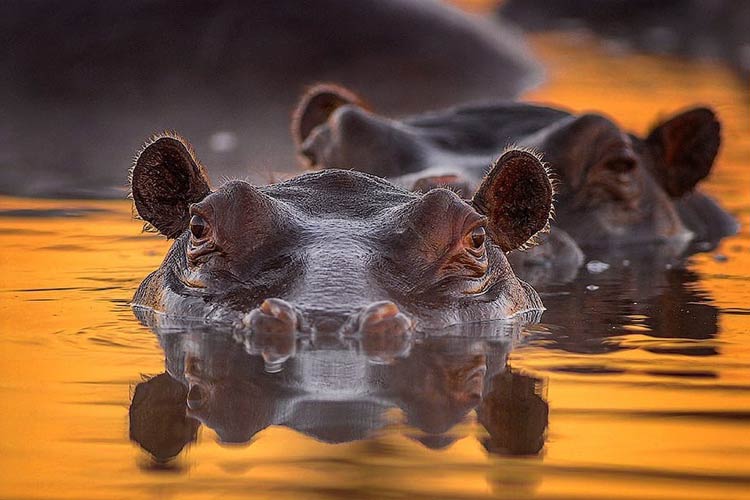
Hippo also has huge lungs, if it took in air, wouldn’t that be enough to float on water like an elephant?
Yes, hippos do have large lungs, but that is not enough to float on water like an elephant. The key difference lies in body density and mass distribution.
Body Density and Bones
Hippos have exceptionally heavy and dense bones (pachyostosis), which makes their overall density greater than that of elephants. Even if they take air into their lungs, their bones still pull them down. Elephants, on the other hand, have lighter bones with more air spaces (called pneumatization), which lowers their total density and makes it easier for them to float on water.
Mass Distribution and Body Shape
Elephants have a more elongated body, and their mass is distributed in a way that is conducive to swimming. Hippos are barrel-shaped, with a heavy torso and short legs, which is not conducive to staying afloat.
Lifestyle and Adaptation
Hippos are evolutionarily adapted to living in water, but their strategy is to stay underwater, not to swim. Their bodies act more like “amphibians” that submerge and move along the bottom, rather than stay afloat. Elephants, on the other hand, behave more like marine mammals in water, using the buoyancy of their lungs to lift their bodies.
Could a Hippo Float on Water?
Theoretically, if a hippo took a lot of air into its lungs, it could float for a moment – but not in the same way as an elephant. Its natural tendencies and body structure mean that instead of swimming, it chooses the strategy of submerging and pushing off the bottom.
In summary: Yes, hippos have large lungs, but their dense bones and heavy bodies largely negate the buoyancy effect that allows elephants to float freely on water.
Aquatic Life Without Swimming
Hippos are a perfect example of how evolution can create unexpected solutions. They don’t swim, but thanks to their adaptations, they cope perfectly in the water. It is this life at the intersection of two environments – aquatic and terrestrial – that has made them one of the most unique animals in Africa.
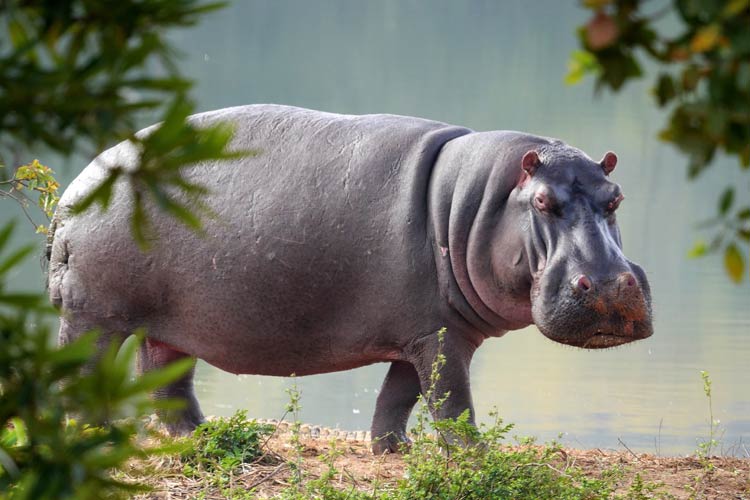
In summary
Hippos (Hippopotamus amphibius) cannot swim because their bodies are too massive and dense to float on water. Instead, they move underwater by pushing off the bottom like an astronaut in low gravity. Their bones are exceptionally heavy and dense (a condition called pachyostosis), which further increases their ability to submerge.
However, they do not sink in the usual sense of the word – they simply walk along the bottom of rivers and lakes, surfacing from time to time to take a breath. They also have a special reflex: even when sleeping underwater, they automatically surface and breathe, then sink back down.
If hippos tried to swim in the classic way, like other aquatic mammals, they would have trouble staying afloat due to their body structure. Their strategy of moving in water is therefore a unique adaptation to life in a semi-aquatic environment.
Although hippos do sink and do not swim, Archimedes’ principle still affects their behavior in water. Buoyancy makes it easier for them to surface and reduces the effort required to move underwater. This is a perfect example of an animal’s adaptation to life in an aquatic environment without the need for active swimming!
